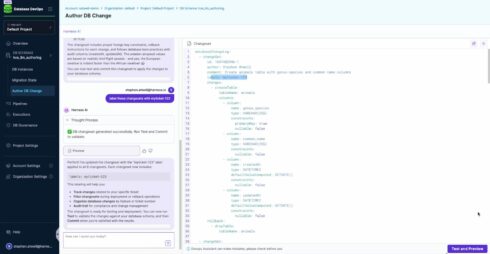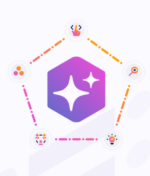
Harness is on a mission to make it easier for developers to do database migrations with its new AI-Powered Database Migration Authoring feature. This new capability allows users to describe schema changes in natural language to receive a production-ready migration.
For example, a developer could ask “Create a table named animals with columns for genus_species and common_name. Then add a related table named birds that tracks unladen airspeed and proper name. Add rows for Captain Canary, African swallow, and European swallow.”
Harness’ platform would then analyze the current schema and policies, generate a backward-compatible migration, validate the change for safety and compliance, commit it to Git for testing, and create rollback migrations.
“This is more than an incremental feature – it’s a step toward AI-native DevOps, where systems understand intent, enforce policy, and automate delivery from code to cloud to database,” Harness wrote in a blog post.
This new capability is a part of Harness Database DevOps and is powered by Harness’ Software Delivery Knowledge Graph and MCP Server, which understands the user’s database and pipelines and has built-in best practices.
According to Harness, AI has sped up the process of writing code, but systems that move that code into production, like testing, security, and database delivery, haven’t kept up. Additionally, most development teams still manage schema updates manually through SQL scripts, spreadsheet tracking, and late-stage approvals.
“In a recent Harness study, 63% of organizations ship code faster since adopting AI, but 72% have suffered at least one production incident caused by AI-generated code. The result is the AI Velocity Paradox: faster coding, slower delivery. But there’s a solution. 83% of leaders agree that AI must extend across the entire SDLC to unlock its full potential. Database DevOps helps to close that gap by extending AI-powered automation and governance to the last mile of DevOps: the database,” Harness wrote.






